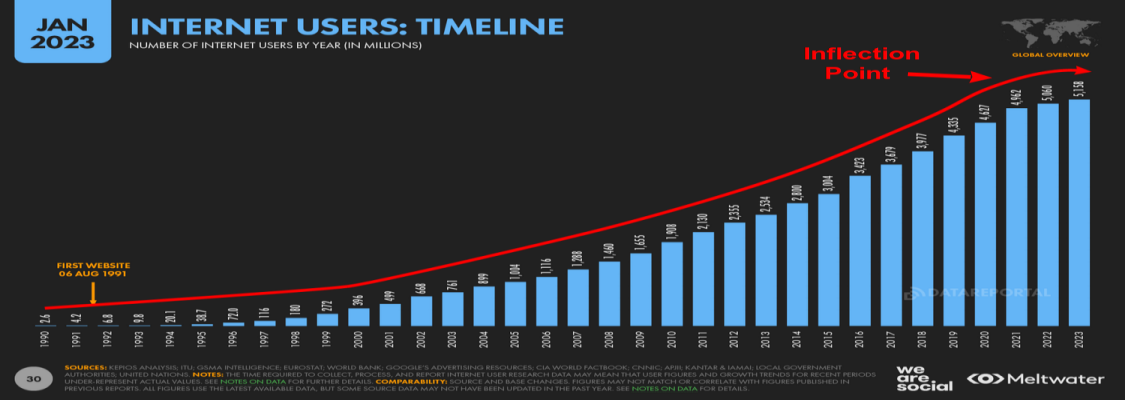Over twenty years ago I created this concept which may finally be coming into its own, like the Vertical Web, the Cultural Diffusion and the Gold-backed Digital Currency.
The S-Curve: A graph showing the rate of growth of an entity like a business, animal population, etc. It has three important regions - the initial start (high risk), the inflection point and saturation (slowing growth). This image is from my first website, RealMeme.com

Technology Revolutions: Historical periods when new technologies emerge, grow and replace existing infrastructure. Their rate of growth is often an S-Curve. Technology revolutions include:
- Steam and railroads in 1829
- Steel and electricity in 1875
- Information and telecommunications in 1971
Cost As The Driver: Technology revolutions create "virtuous cycles" where growth in a primary industry drives growth in other industries. During the Steel revolution, the falling cost of steel led to more railroads, which led to cheaper commodities like wheat and coal. Cheaper coal made even cheaper steel for steel-framed buildings, which spawned elevators, penthouse apartments and fire escapes.

Information Revolution: Microchips, the internet and information have transformed the economy for fifty years through cheaper information. These graphs on internet growth (one from 1992, the other from 2023) fit the S-Curve model. The first has an "initial start" phase, the second has an inflection point.


Cost Of Information: Assume the declining cost of information (COI) has driven economic activity for fifty years. Then the stagnation or increase of COI could be disasterous for the economy. The preceding graph shows an inflection point in Internet user growth, implying that Internet growth is slowing and will soon stagnate.
Inflection Point: We could build a COI monitor by creating a weighted market basket of information-related costs and prices. Cost of microchip inputs versus their price. Cost of telecom inputs versus their price, etc. Monitor changes over time to throw a warning flag when the Information Revolution has peaked, which I strongly suspect is now.

Circumstantial Evidence:

















Comments